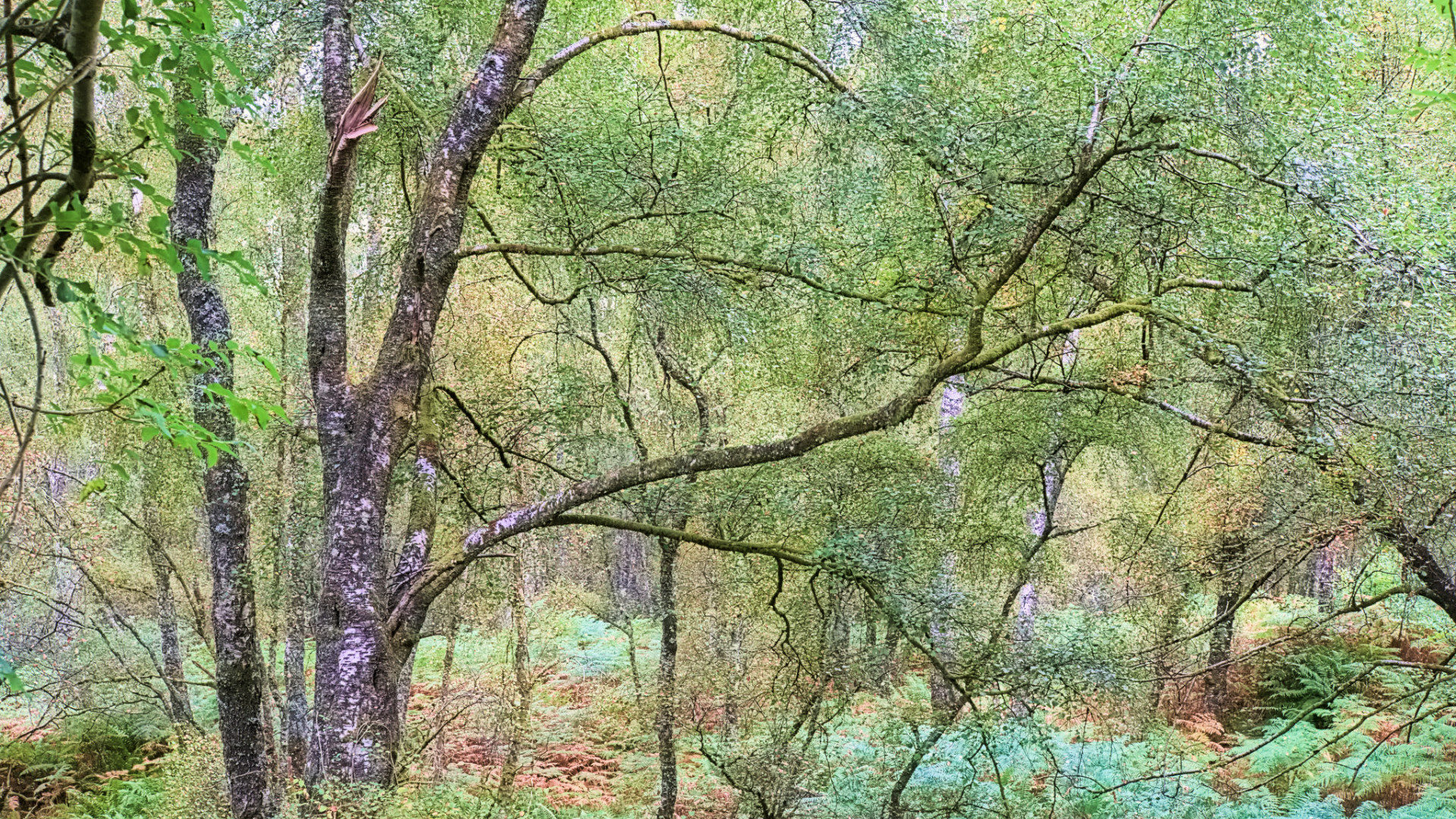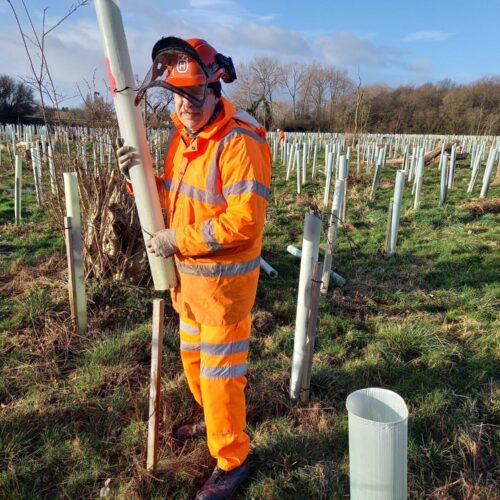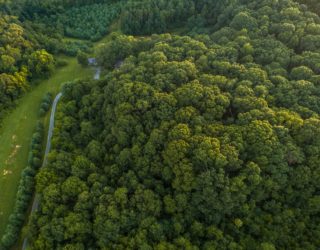Whilst on a recent family outing, and as usual obsessing about trees, Head of Arboriculture at Thomson Ecology, Neil Francis, was shocked to see the very real consequences of not installing any tree protection measures on a development site.
A significant limb had been ripped from the trunk of a pedunculate oak (Quercus robur) leaving a wound exposed to pathogens; excavated soil was being dumped on already compacted clay-rich soil right up to the base of the only two retained trees at a new housing development; and there was no tree protection fencing in place to prevent physical damage to the tree, with soil compaction from heavy plant moving through the Root Protection Area (RPA).
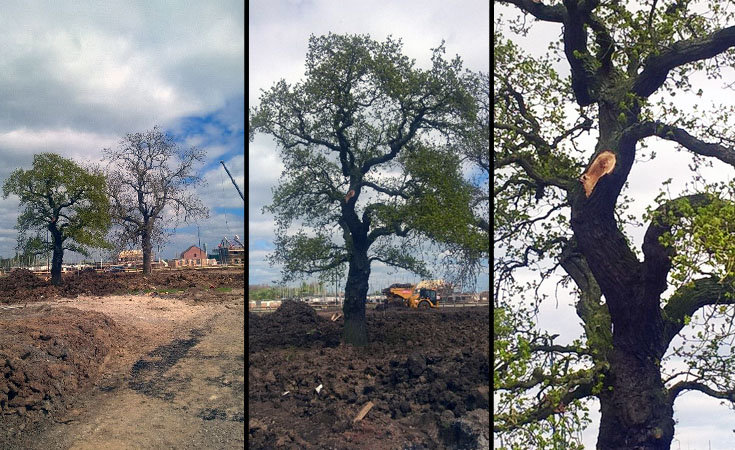
Equally worrying was the condition of an ash tree (Fraxinus excelsior). Already a tree in decline, the soil compaction and increased ground levels will certainly not help the tree and I do not hold out much hope for its long-term survival; a shame as with suitable remedial actions the tree could have contributed to the amenity value of the development for a good number of years.
How trees are protected
Under the UK planning system, Local Planning Authorities (LPA) have a statutory duty to consider the protection and planting of trees when granting planning permission for proposed development.
Where trees may be impacted upon by any proposed development, the LPA will usually require an Arboricultural Impact Assessment (AIA) which identifies those trees that can realistically be retained, and recommends any necessary mitigation, and an Arboricultural Method Statement (AMS) which details how trees that are to be retained will be protected during the development works.
A fundamental part of these reports is the Tree Protection Plan (TPP) which shows the location of tree protection fencing, extent and type of ground protection and other physical measures that protect the trees and their RPA.
Protective fencing, if installed according to the AMS and TPP, can be a very effective barrier to construction activity through the creation of a Construction Exclusion Zone (CEZ), an area based on the RPA from which access is prohibited during the project lifespan.
A few weeks later I went back to the same site to find that the excavated soil had been graded and harrowed to a coarse tilth. Levels had also increased significantly (compared in the before and after photos).
Even more surprising was the fact that suitable tree protection fencing was available and could have been used to create a CEZ and prevent damage to the tree and the soil structure.
Examples of good tree protection
At another site, where Thomson Ecology were involved, robust and secure tree protection fencing had been installed around a silver birch tree (Betula pendula) to create a suitable CEZ. The construction staff on site had been briefed about tree protection and were respectful of this.
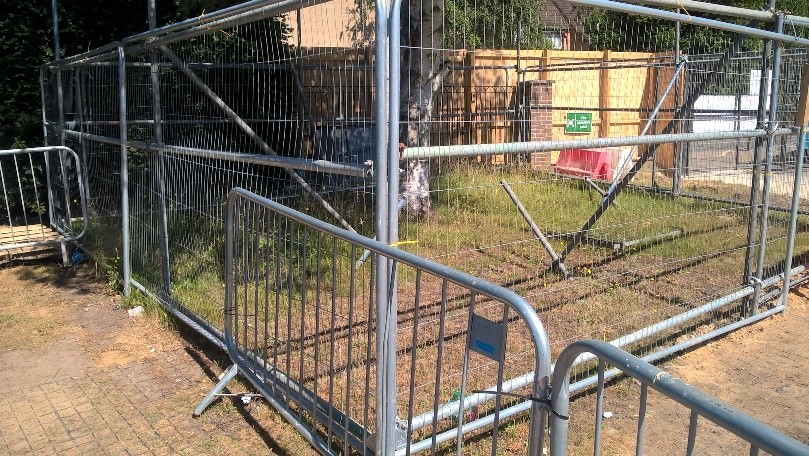
Where retained trees are not sufficiently protected and, crucially, the CEZ is breached, the Local Planning Authority or Tree Officer may intervene to ensure compliance with the AMS and TPP. For example, Solihull Metropolitan Borough Council, routinely monitor a proportion of new approved developments to ensure that the approved plans and any conditions are complied with.
Where they are not adhered to, alleged breaches are investigated. More specifically, if trees are at risk from a breach of planning control, the Council have various options open to them which they can consider. These include:
- Enforcement notices
- Stop notices
- Breach of condition notices
- County or High Court injunctions
It is obvious that any of these actions can have serious cost and time implications for companies, resulting in project delays, budget overrun and unwelcome publicity.
The solution
Thomson Ecology’s arboricultural team are experienced, accomplished, practised, adept in the production of AIAs, Method Statements and TPPs and have supported hundreds of development projects to ensure that trees, on and adjacent to a site, are fully protected at all times during the works.
Get in touch
Concerned about how you or your clients are dealing with tree protection on development sites? Get in touch with us today
